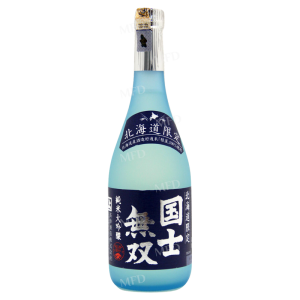Sake is a drink for the sophisticates who appreciate and recognise fine liquor. The story of the White Sake (the concluding part below) tells of how only the wise and humble are able to savour the richness of the white sake. While this fable is clear in its lessons, an overarching truth we may take from it is that as with all things and situations we come across, we must remain open to the new and the untried; to take it in our stride tastes and smells that we are unfamiliar with; to experience physical and soulful touch that we had never before experienced.
Sake is more than just a drink. The richness of sake lies in its history, the tradition; the culture. You imbibe sake like you would wisdom and truth.
Continuing the story of the White Sake Part 3
Beginning of Part 3
Koyuri led the way, weeping the while at the loss of his saké, which Mamikiko had thrown away, and fearing the anger of his red friends. In the usual place, they found the strangers, who had both been drinking and were still doing so. Mamikiko was surprised at their appearance: he had seen nothing quite like them before. Their bodies were of the pink of cherry blossom shining in the sun, while their long red hair almost frightened him; both were naked except for a green girdle made of some curious seaweed.
‘Well, boy Koyuri, what are you crying about, and why back so soon? Has your father drunk the saké already? If so he must be almost as fond of it as we.’
‘No, no: my father has not drunk it; but Mamikiko, here, took it from me and drank some, spitting it out and saying it was not saké; the rest he threw away, and then made me bring him here. May I have some more for my father?’ The red man refilled the gourd and told him not to mind, and seemed amused at Koyuri’s account of Mamikiko spitting it out.
‘I am as fond of saké as anyone,’ cried Mamikiko: ‘will you give me some?’

‘Oh, yes; help yourself,’ said the red man; ‘Help yourself.’ Mamikiko filled the largest of the cups, and, putting it to his nose, smelt the fragrance, which was delicious; but as soon as he put it to his lips his face changed, and he had to spit again, for the taste was nauseating.
‘What is the meaning of this?’ he cried angrily, and the red man answered still more angrily:
‘You do not seem to be aware of who I am. Well, I will tell you that I am a shojo of high degree, and I live deep in the bottom of the ocean near the Sea Dragon’s Palace. Recently we heard that a sacred mountain had arisen on the edge of the sea, and, as it is a lucky omen and a sign that the Empire of Japan will exist in perpetuity, I have come here to see it. While enjoying the magnificent scene from Suruga coast I met this good boy Koyuri, who asked for saké for his poor sick old father, and I gave him some. Now, this saké is not ordinary saké, but sacred, and those who drink it live forever and retain their youth; moreover, it cures all diseases even in the aged. But you must know that any medicine is sometimes a poison, and thus it is that this sweet sacred white saké is good only in taste to the righteous, and bad-tasting and poisonous to the wicked. Thus I know that, as it tastes evil to you, you are an evil and wicked man, selfish and greedy.’ And both the shojos laughed at Mamikiko, who, on hearing that the few drops which he must have swallowed would act as poison and soon kill him, began to cry with fear and to regret his conduct. He begged and implored forgiveness and that his life might be spared, and vowed that he would reform if only given a chance. The shojo, drawing some powder from a case, gave it to Mamikiko, and told him to swallow it in some saké; ‘for,’ said he, ‘it is better to repent and reform even in your old age than not at all.’
Mamikiko drank it down this time, finding the wine sweet and delicious; it strengthened him and made him feel well, and he reformed and became a good man. He made friends again with Yurine and treated Koyuri well.
Some years later Mamikiko and Yurine built a hut at the southern base of Fuji San, where they brewed white saké from a recipe given them by the shojo, and they gave it to all who suffered from saké poisoning. Both Mamikiko and Yurine lived for 300 years.
In the Middle Ages, a man who had heard this story brewed white saké at the foot of Mount Fuji; he made it with rice yeast, and people became very fond of it. Even to-day white saké is brewed somewhere at the foot of the mountain and is well known as a special liquor belonging to Fuji. I myself drank it in 1907 without fear of living beyond my fifty-fifth year.
The end.
MFD has an array of sake available to discerning drinkers such as yourself. You can also buy them at established supermarkets. Drop us a line here, Instagram or Facebook to find out more.
Kanpai!


